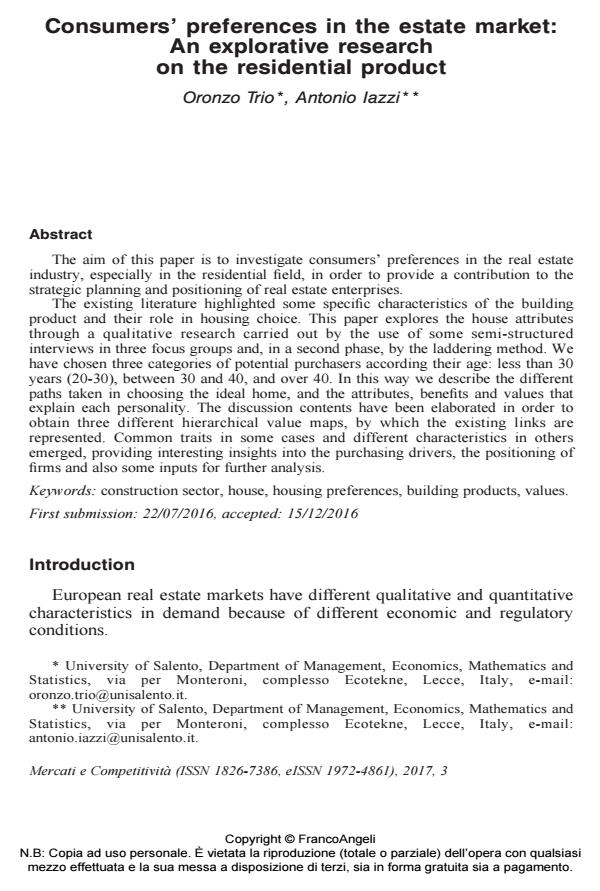Consumers’ preferences in the estate market: An explorative research on the residential product
Journal title MERCATI & COMPETITIVITÀ
Author/s Oronzo Trio, Antonio Iazzi
Publishing Year 2017 Issue 2017/3
Language English Pages 21 P. 147-167 File size 142 KB
DOI 10.3280/MC2017-003009
DOI is like a bar code for intellectual property: to have more infomation
click here
Below, you can see the article first page
If you want to buy this article in PDF format, you can do it, following the instructions to buy download credits

FrancoAngeli is member of Publishers International Linking Association, Inc (PILA), a not-for-profit association which run the CrossRef service enabling links to and from online scholarly content.
The aim of this paper is to investigate consumers’ preferences in the real estate industry, especially in the residential field, in order to provide a contribution to the strategic planning and positioning of real estate enterprises. The existing literature highlighted some specific characteristics of the building product and their role in housing choice. This paper explores the house attributes through a qualitative research carried out by the use of some semi-structured interviews in three focus groups and, in a second phase, by the laddering method. We have chosen three categories of potential purchasers according their age: less than 30 years (20-30), between 30 and 40, and over 40. In this way we describe the different paths taken in choosing the ideal home, and the attributes, benefits and values that explain each personality. The discussion contents have been elaborated in order to obtain three different hierarchical value maps, by which the existing links are represented. Common traits in some cases and different characteristics in others emerged, providing interesting insights into the purchasing drivers, the positioning of firms and also some inputs for further analysis.
Keywords: Construction sector, house, housing preferences, building products, values.
Oronzo Trio, Antonio Iazzi, Consumers’ preferences in the estate market: An explorative research on the residential product in "MERCATI & COMPETITIVITÀ" 3/2017, pp 147-167, DOI: 10.3280/MC2017-003009